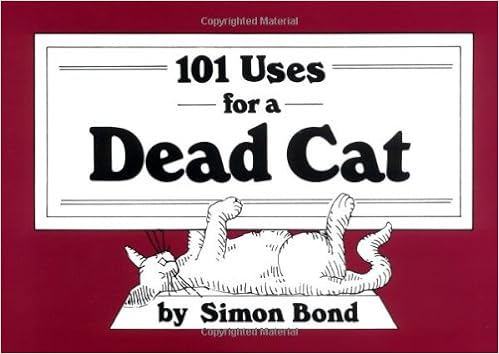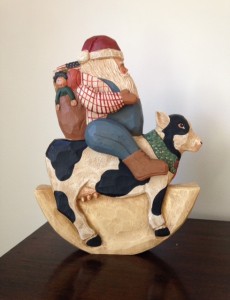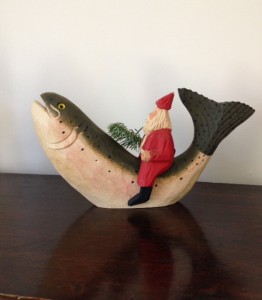What do these five carved wooden Santas have in common?
All were carved by James Haddon! I’ve had the trio for awhile. Last Christmas season, I noticed that all were by the same carver. So this year, I searched on-line and found the Santa on a rocking cow and the Santa riding a trout. I believe James Haddon is creative. Synonyms for creative include clever, ingenious, innovative, inventive, and original. Perhaps most importantly, he seems to me to be a divergent thinker.
Creativity and Divergent Thinking
Veering into psychology for a moment: a convergent thinker draws everything together to come up with the one perfect solution; a divergent thinker starts at point A and goes any number of places. There are approximately a gazillion definitions of creativity (forgive the high degree of technicality and precision) depending upon whether you are a visual artist, a mathematician, a musician, a chef, or an educator—or a researcher in any number of other fields. But the requirement for divergent thinking comes up again and again.
Ancient cultures—including Greece, China, and India–had no concept of creativity. They saw art as a form of discovery or imitation, not creation. In Judaeo-Christian tradition, creation was the sole province of God, and anyone creating something was assumed to be acting as a conduit from God. The modern concept of creativity began in the Renaissance, when the idea that creation might originate from the individual, not God—so I read. Think Leonardo da Vinci. The idea gradually took hold, really digging in during the Enlightenment.
It wasn’t until 1927 that Alfred North Whitehead coined the term “creativity.”
Have you ever thought, “If only. . .”? If so, you are imagining alternatives to reality, and such counterfactual thinking is one example of everyday creativity.
In 1967, J.P. Guilford and his associates constructed several tests to measure creativity. How would you do?
- Plot Titles: participants are give a story plot and instructed to write original titles
- Quick Responses: a word-association test scored for uncommonness
- Figure Concepts: participants get simple drawings of objects and individuals and are asked to find commonalities in two or more drawings
- Remote Association: participants are asked to find a word between two given words (e.g., Hand Call)
- Remote Consequences: participants generate a list of consequences of unexpected events (e.g., loss of gravity)
- Unusual Uses is finding unusual uses for common objects, such as bricks.
If you check out books on Amazon, you can find Sneaky Uses for Everyday Things, 101 Uses for a Dead Cat, and other books on uses for everything from baking soda, coconut oil, and vinegar to duct tape. Who knew we could reap the benefits of all that creative thinking!


Gregory Feist did a meta-analysis of data on creative people and found the strongest related traits were openness to new experience, conscientiousness, self-acceptance, hostility and impulsivity. Besides these traits, other research has identified additional traits associated with creativity: self-confident, ambitious, impulsive, driven, dominant, and hostile.
And what about mental health? Many people equate creativity with genius—and traditional wisdom says genius is akin to insanity. A Swedish study involving more than a million people reported a number of correlations between creative occupations and mental illnesses—do remember that correlations mean a relationship, not in any way causation. Writers had a higher risk of anxiety and bipolar disorders, schizophrenia, unipolar depression, and substance abuse, and were almost twice as likely as the general population to kill themselves. Dancers and photographers were also more likely to have bipolar disorder. However, as a group, people in creative professions were not more likely to suffer psychiatric disorders that the population at large, though they were more likely to have a close relative with a disorder, including anorexia and autism.
So, I started with jolly Santas and ended up with mental illness. Is this divergent thinking??


